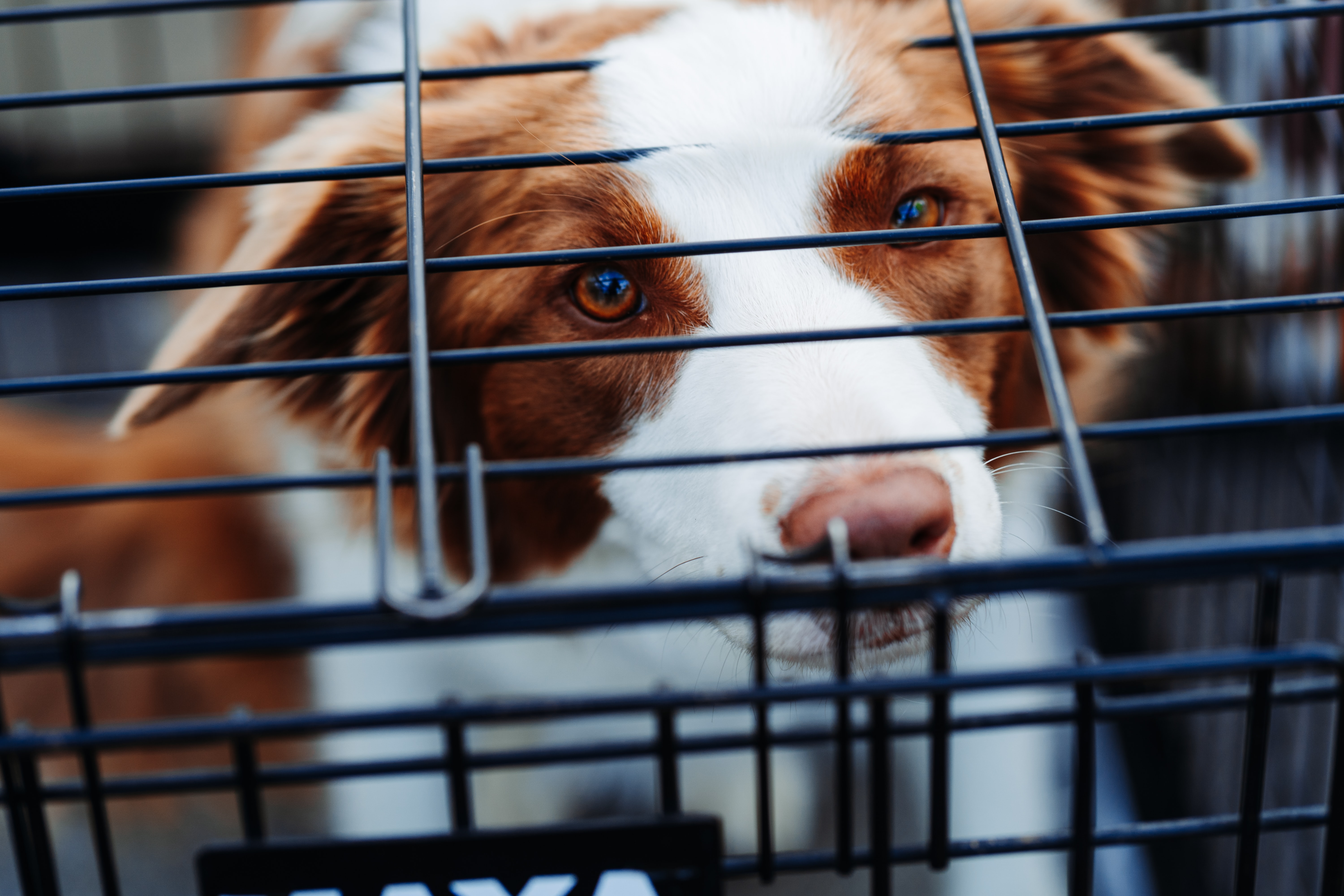A huge misconception is that crate training your dog is a punishment, or should only be done with dogs that misbehave. While people might look at the crate as a “cage”, a well-trained dog doesn’t see it that way. Dogs have a natural denning instinct and can benefit greatly from having their own space. Crates can be a great housetraining tool as dogs do not want to soil their den, so they will be less likely to have an accident in the crate.
Being able to crate your dog can also give you peace of mind that they won’t get into trouble while you’re out of the house. However, crate training can be a process. In the end, you want your dog to go willingly into their crate. In order to get there, the key is associating the crate with positive things!
Crate Training Basics
- When you introduce the dog to their crate, do not force them to go inside. They might be confused or scared by the new structure and forcing them inside will establish a negative association.
- While your dog is getting used to the crate, leave the door open all the time so they can explore it at their own pace.
- Keep the crate in a place where you spend a lot of time, like the living room.
- To prevent confusion, give your dog a specific command that tells them it is time to go in their crate. Something as simple as “crate” or kennel” will work, or you can come up with something more fun like “go to your room”.
Food can be a great learning tool for pups. Feeding your dog in their crate can make them excited and eager to go in when needed. If your dog will go fully inside the crate on their own, put the food bowl at the back of the crate. If this is not the case yet, put the bowl just inside the crate and work on moving it farther inside until they are fully in the crate while eating. Begin showing them that having the door closed isn’t scary but closing it while they are eating. Leave the door closed for one minute the first time, and slowly increase the amount of time from there. If your dog whines to get out, they’re not ready to be shut in the crate that long. However, do not let them out while they whine or they will learn that they can get out of the crate by whining.
Once they are comfortable, your dog should look at their crate as a place they can go to rest. Encourage this line of thinking by putting their bed or their favorite blanket inside. You can even put your dog inside while they are resting but leave the door open so they don’t feel like they are stuck.
The most important thing to remember is that you want your pup to have positive feelings about their crate. The crate should never be used as a punishment. Don’t leave them crated all the time, as inadequate amounts of exercise or human interaction can lead to depression and anxiety. While houstraining, don’t leave them in longer than you know they can hold it.
For more training tips, or if you need obedience training for your dog – call Gulf Coast K9 Dog Training today.





